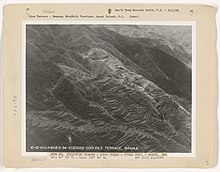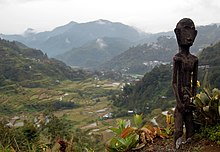
Ifugao, officially the Province of Ifugao, is a landlocked province of the Philippines in the Cordillera Administrative Region in Luzon. Its capital is Lagawe and it borders Benguet to the west, Mountain Province to the north, Isabela to the east, and Nueva Vizcaya to the south.

Mountain Province is a landlocked province of the Philippines in the Cordillera Administrative Region in Luzon. Its capital is Bontoc. Mountain Province was formerly referred to as Mountain in some foreign references. The name is usually shortened by locals to Mt. Province.

The Cordillera Administrative Region, also known as the Cordillera Region and Cordillera, is an administrative region in the Philippines, situated within the island of Luzon. It is the only landlocked region in the insular country, bordered by the Ilocos Region to the west and southwest, and by the Cagayan Valley Region to the north, east, and southeast. It is the least populous region in the Philippines, with a population less than that of the city of Manila.

The Cordillera Central or Cordillera Range is a massive mountain range 320 km long north-south and 118 km east-west. The Cordillera mountain range is situated in the north-central part of the island of Luzon, in the Philippines. The mountain range encompasses all provinces of the Cordillera Administrative Region, as well as portions of eastern Ilocos Norte, eastern Ilocos Sur, eastern La Union, northeastern Pangasinan, western Nueva Vizcaya, and western Cagayan.

A paddy field is a flooded field of arable land used for growing semiaquatic crops, most notably rice and taro. It originates from the Neolithic rice-farming cultures of the Yangtze River basin in southern China, associated with pre-Austronesian and Hmong-Mien cultures. It was spread in prehistoric times by the expansion of Austronesian peoples to Island Southeast Asia, Southeast Asia including Northeastern India, Madagascar, Melanesia, Micronesia, and Polynesia. The technology was also acquired by other cultures in mainland Asia for rice farming, spreading to East Asia, Mainland Southeast Asia, and South Asia.

The indigenous peoples of the Cordillera in northern Luzon, Philippines, often referred to by the exonym Igorot people, or more recently, as the Cordilleran peoples, are an ethnic group composed of nine main ethnolinguistic groups whose domains are in the Cordillera Mountain Range, altogether numbering about 1.8 million people in the early 21st century.

Asipulo, officially the Municipality of Asipulo is a 5th class municipality in the province of Ifugao, Philippines. According to the 2020 census, it has a population of 15,963 people.

Banaue, officially the Municipality of Banaue is a 4th class municipality in the province of Ifugao, Philippines. According to the 2020 census, it has a population of 20,652 people.

Hungduan, officially the Municipality of Hungduan is a 4th class municipality in the province of Ifugao, Philippines. According to the 2020 census, it has a population of 8,866 people.

Kiangan, officially the Municipality of Kiangan is a 4th class municipality in the province of Ifugao, Philippines. According to the 2020 census, it has a population of 17,691 people.

The Rice Terraces of the Philippine Cordilleras are a World Heritage Site consisting of a complex of rice terraces on the island of Luzon in the Philippines. They were inscribed on the UNESCO World Heritage List in 1995, the first-ever property to be included in the cultural landscape category of the World Heritage List. This inscription has five sites: the Batad Rice Terraces and Bangaan Rice Terraces, Mayoyao Rice Terraces, Hungduan Rice Terraces and Nagacadan Rice Terraces, all in Ifugao Province. The Ifugao Rice Terraces reach a higher altitude and were built on steeper slopes than many other terraces. The Ifugao complex of stone or mud walls and the careful carving of the natural contours of hills and mountains combine to make terraced pond fields, coupled with the development of intricate irrigation systems, harvesting water from the forests of the mountain tops, and an elaborate farming system.
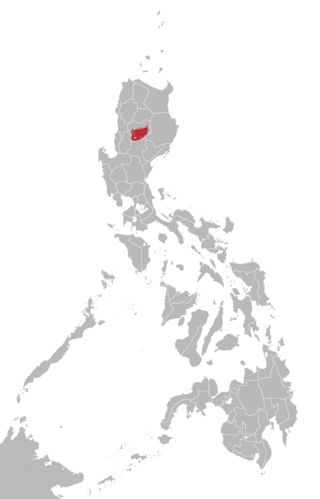
Ifugao or Batad is a Malayo-Polynesian language spoken in the northern valleys of Ifugao, Philippines. It is a member of the Northern Luzon subfamily and is closely related to the Bontoc and Kankanaey languages. It is a dialect continuum, and its four main varieties—such as Tuwali—are sometimes considered separate languages.

Bagabag Airport is an airport serving the general area of Bagabag, located in the province of Nueva Vizcaya in the Philippines. It is the only airport in Nueva Vizcaya and is classified as a community airport by the Civil Aviation Authority of the Philippines, a body of the Department of Transportation that is responsible for the operations of airports in the Philippines except the major international airports.
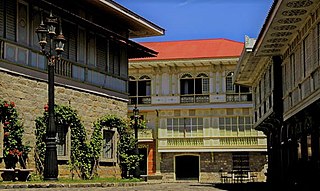
The architecture of the Philippines reflects the historical and cultural traditions in the country. Most prominent historic structures in the archipelago are influenced by Austronesian, American architectures.
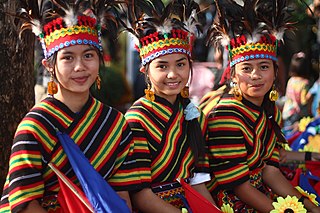
The Ifugao people are the ethnic group inhabiting Ifugao province in the Philippines. They reside in the municipalities of Lagawe, Aguinaldo, Alfonso Lista, Asipulo, Banaue, Hingyon, Hungduan, Kiangan, Lamut, Mayoyao, and Tinoc. The province is one of the smallest provinces in the Philippines with an area of only 251,778 hectares, or about 0.8% of the total Philippine land area. As of 1995, the population of the Ifugaos was counted to be 131,635. Although the majority of them are still in Ifugao province, some of them have moved to Baguio, where they work as woodcarvers, and to other parts of the Cordillera Region.

The cultural achievements of pre-colonial Philippines include those covered by the prehistory and the early history (900–1521) of the Philippine archipelago's inhabitants, the pre-colonial forebears of today's Filipino people. Among the cultural achievements of the native people's belief systems, and culture in general, that are notable in many ethnic societies, range from agriculture, societal and environmental concepts, spiritual beliefs, up to advances in technology, science, and the arts.
Biosphere reserves are areas comprising terrestrial, marine and coastal ecosystems. The biosphere reserve title is handed over by UNESCO. Each reserve promotes solutions reconciling the conservation of biodiversity with its sustainable use. Biosphere reserves are 'Science for Sustainability support sites' – special places for testing interdisciplinary approaches to understanding and managing changes and interactions between social and ecological systems, including conflict prevention and management of biodiversity. Biosphere reserves are nominated by national governments and remain under the sovereign jurisdiction of the states where they are located. Their status is internationally recognized.

Teodoro "Teddy" Brawner Baguilat Jr. is a Filipino politician and journalist, activist and advocate of indigenous peoples' rights and the rights of minority groups.
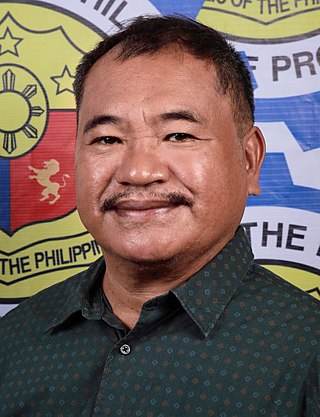
Jerry Uyami Dalipog a Filipino politician from the province of Banaue, Ifugao in the Philippines. He is the current governor of Ifugao Province in the Philippine Cordillera Region. Previously, he was the municipal mayor of Banaue from 2016 to 2019.



